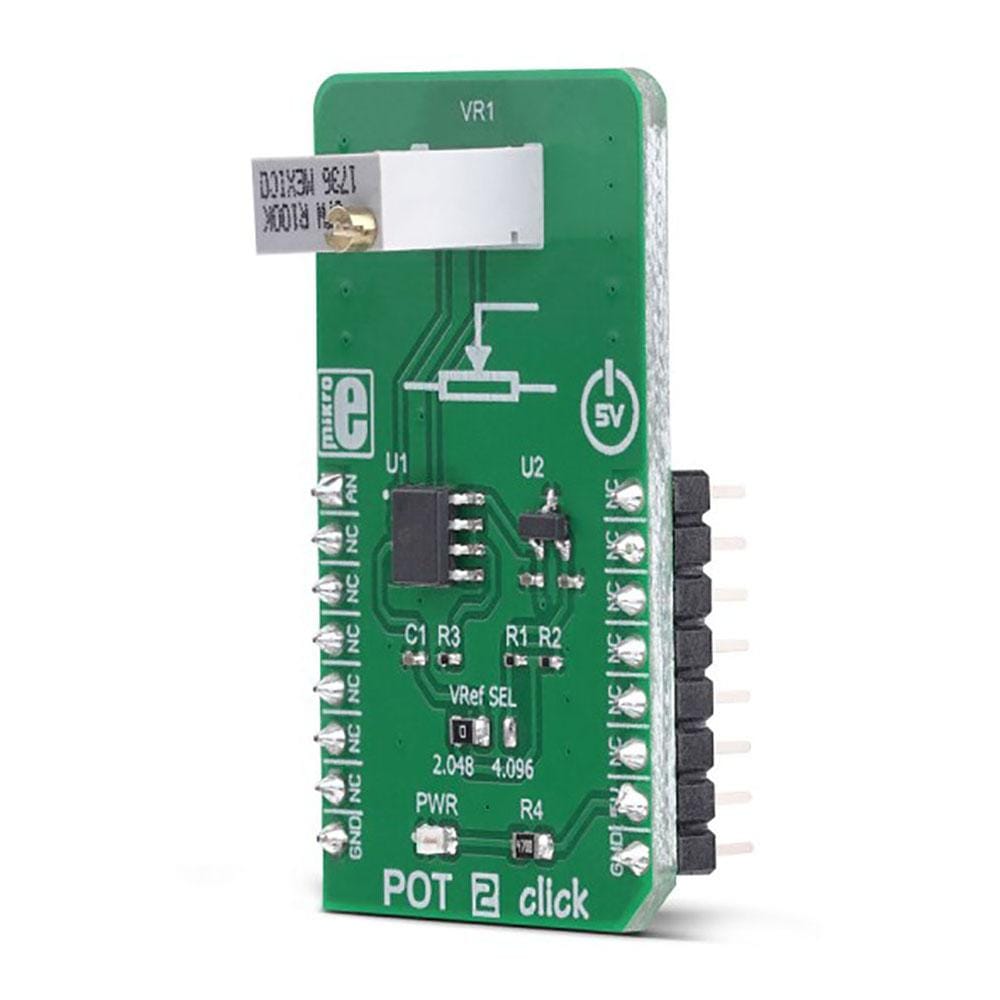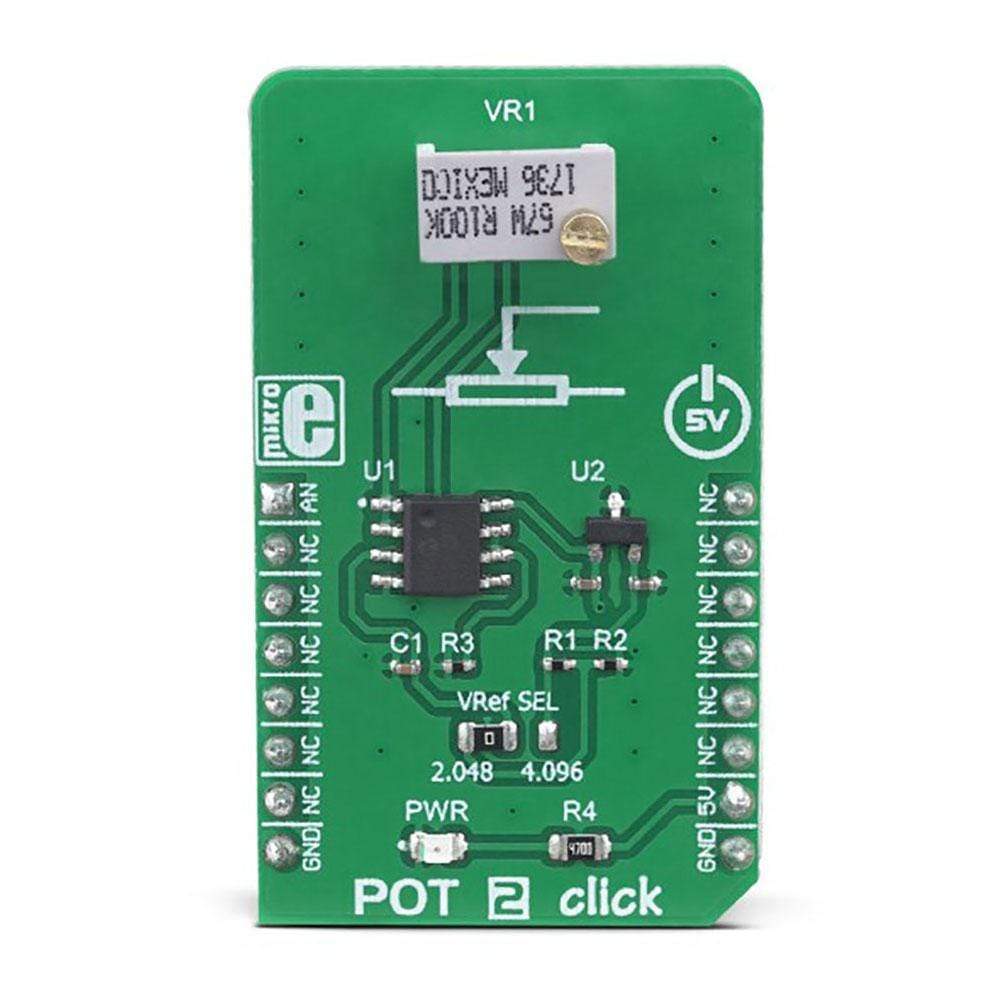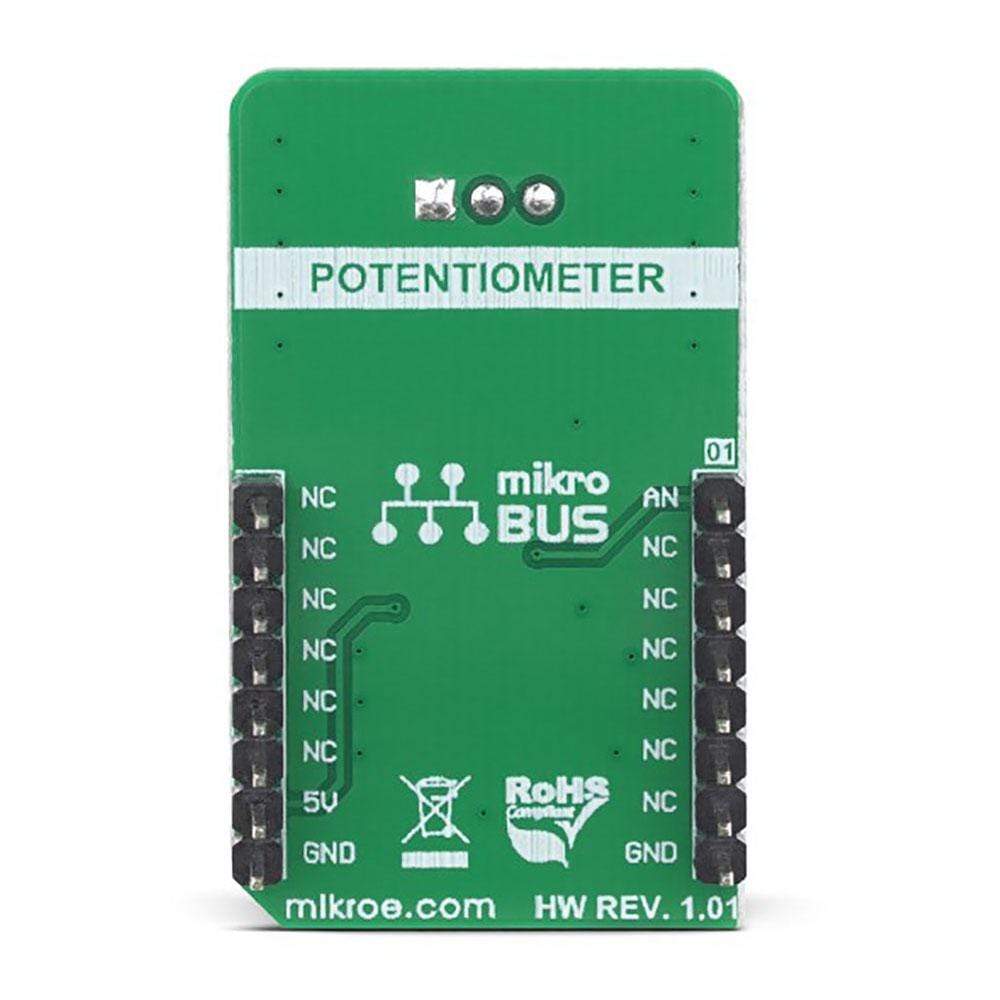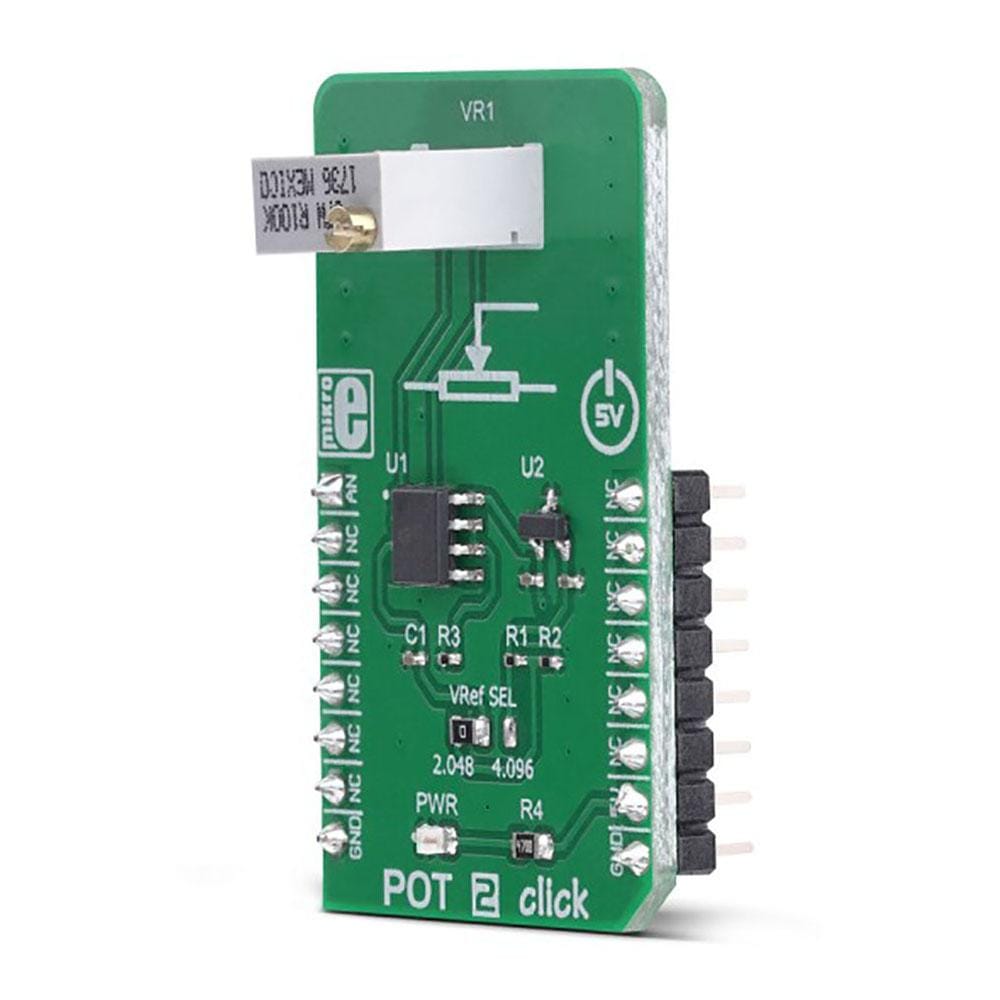
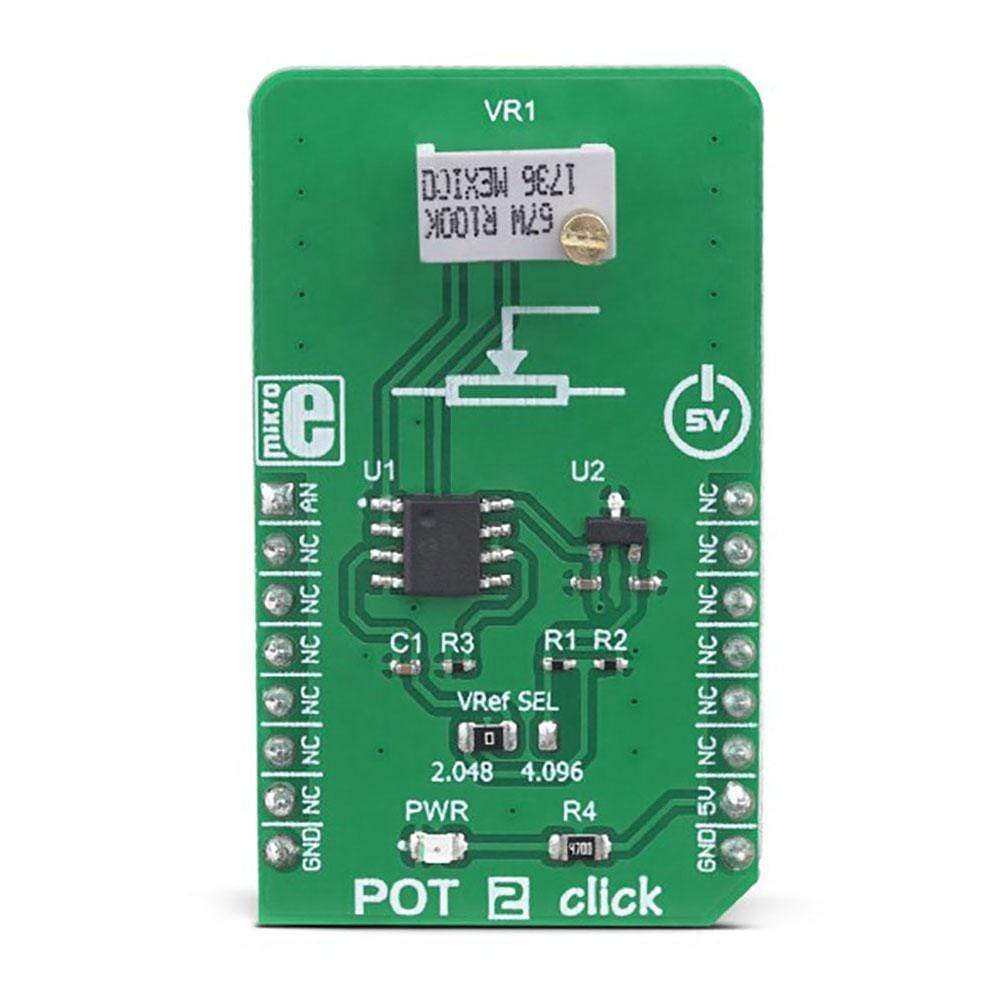
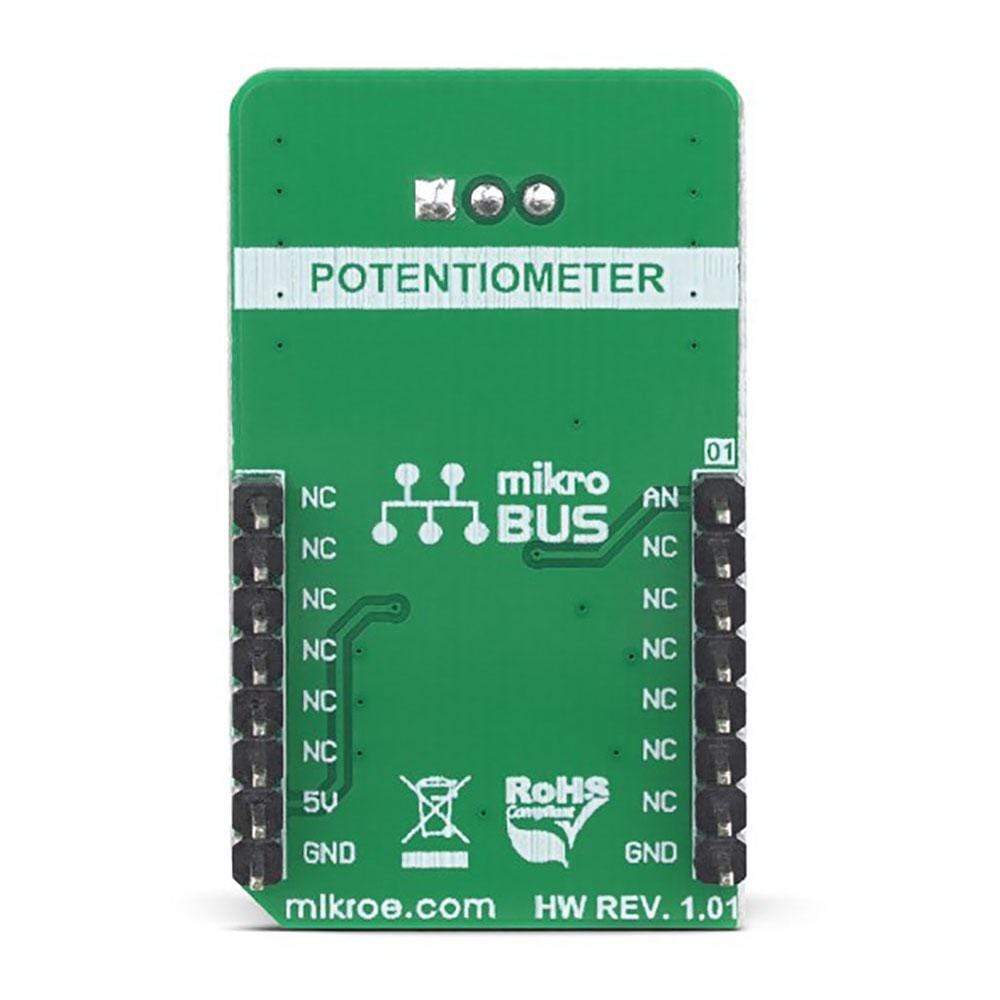
Overview
The POT 2 Click Board™ generates an accurate selectable reference voltage output. By utilising a multi-turn precision potentiometer, this Click Board™ can provide very accurate voltage output on the AN pin of the mikroBUS. The POT 2 Click Board™ is also equipped with the SMD jumper, which allows the maximum reference voltage to be selected between two typically used values: 2.048V or 4.096V. Using a rail-to-rail buffering operational amplifier which provides constant input and output impedance, this Click Board™ is an ideal solution when accurately controlled voltage reference is required.
Downloads
Das POT 2 Click Board™ erzeugt eine genaue, wählbare Referenzspannungsausgabe. Durch die Verwendung eines mehrgängigen Präzisionspotentiometers kann dieses Click Board™ eine sehr genaue Spannungsausgabe am AN-Pin des Mikrobus liefern. Das POT 2 Click Board™ ist außerdem mit einer SMD-Steckbrücke ausgestattet, mit der die maximale Referenzspannung zwischen zwei üblicherweise verwendeten Werten ausgewählt werden kann: 2,048 V oder 4,096 V. Mit einem Rail-to-Rail-Pufferoperationsverstärker, der eine konstante Eingangs- und Ausgangsimpedanz bietet, ist dieses Click Board™ eine ideale Lösung, wenn eine genau gesteuerte Spannungsreferenz erforderlich ist.
| General Information | |
|---|---|
Part Number (SKU) |
MIKROE-3325
|
Manufacturer |
|
| Physical and Mechanical | |
Weight |
0.019 kg
|
| Other | |
Country of Origin |
|
HS Code Customs Tariff code
|
|
EAN |
8606018714506
|
Warranty |
|
Frequently Asked Questions
Have a Question?
Be the first to ask a question about this.

